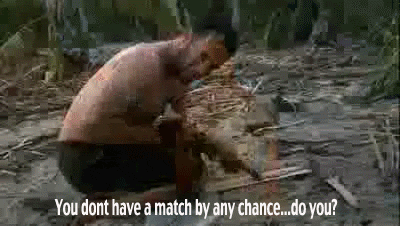Create Extraordinary Teams in Your Life, Work, and Anywhere In-Between

Even if you are a team of one, the reality is - both in business AND in life - you will encounter people.
We know, we know...ugh, PEOPLE.

But in all seriousness, throughout your life you are going to cross paths with difficult people, amazing people, people who may seem to make your life a bit more challenging, and others who uplift and inspire you.
Each of these types of people though, in their own unique way, contributes to your continual growth, change, and expansion.
The Stoics on Teamwork
One of the two primary pillars of Stoicism is that we should live in accordance with Nature. And by nature, they don’t mean eating only foraged plants, living in a hut, and generating our own electricity ala "Gilligan’s Island". When they say nature, they actually mean human nature.
And with Human nature, the Stoics noted two key ideas:
1. That we are highly social animals. We are certainly capable of surviving on our own, but we can only truly thrive in healthy networks and groups. Just look at Tom Hanks...he really needed a friend on that island.
2. And that we are capable of reason. Though, we don't always exercise it...
The Stoics believed that if we applied our innate intelligence and capability for reason to improve our network and groups, we can then help improve the lives of everyone, including ourselves.
So, unless you want to lock yourself up in your home or go live on a remote lake like Thoreau, you're going to need to learn how to interact and work with your fellow humans.
Go From Adequate to Extraordinary
In your life and work, there most likely will be times when you’ll need the assistance, support, buy-in (whether it’s an idea, a product, a project, or travel plans), or advice from another human being. No, Alexa and Siri can't do it all...yet.
Learning how to best maximize those relationships can lead to mutually beneficial success, avoiding - or at least reducing - miscommunication, conflict, and aggravation along the way.
Having led and worked remotely with teams across the globe (including Croatia, Ukraine, and India) for over 15 years, we’ve learned that - as independent as you may feel at times - your individual success and the success of your team, your organization, and your clients hinges on how well, how often, and how effectively you are able to collaborate with your team.
One of our primary objectives is to prepare individuals and organizations for transformation success. This often means taking on some BIG changes - be it to where, when, with what, how, and by which role or department.
So often, regardless of proximity, even the most well-connected teams can stumble or fail in these BIG goals and initiatives as a result of poor team dynamics, ineffective problem-solving, and mission or goal misalignment...regardless of whether they were in the next chair or across the country or world.
Everyone - well most everyone - is extremely hard-working and well-intended...but all those countless hours, meetings, debate, training, design, and development are wasted when everyone isn’t on the same page: focused on achieving the same mission, openly welcoming challenges, and brainstorming solutions - honestly and effectively.
1. Get Clear on Your Team(s)
Here on the Painted Porch, we define a team as any one or more people who you need to connect with toward achieving a common goal. While most of us immediately think about our work team, there is a multitude of teams you are a member of in all areas of your life. Some examples of the teams you’re on may include:
- Work. This can even include MULTIPLE work teams, depending on your role or responsibilities in your organization
- Home & Family. Whether you’re married, dating, cohabitating, consciously uncoupling; have children, or fur-babies; parents, siblings, weird uncles, or cousins - these are your TEAMS...regardless of whether you have specially-made Family Reunion t-shirts or not.
- Friends. The family you CHOOSE. Your friends and friend networks are probably some of your most influential teams...both in good ways and bad.
- Neighbors. Whether you know them or not, those who live around you are also part of a team - your block team, if you will. You are each invested in the health of your street and the upkeep and value of your properties.
- Clubs or Groups. Church groups, book clubs, Volunteer leagues, Facebook groups are a few of the other teams you’re a part of.
Take a few minutes and begin to map out what each of the teams are in your life, work, and everywhere else. It's a lot more than you think.
2. Assemble Your Teammates
Once you've plotted out the various teams you are a part of in your life and work, it's now time to identify who else is a member. This may seem obvious and unnecessary, but it's a very important piece, as we often lose sight of or even overlook certain members who are part of our team, non-human ones included. Don't just think about those teammates you work with often, but ALL members of your team(s). You never know when they may play a crucial role in your and your team's success.
In addition to calling out who is on your team, also spend a few minutes noting their role(s) and responsibilities. Go deeper than their surface-level title or tasks. For example, if you're mapping out your Family Team and you're the mother, don't simply say "My role is Mother". Think about in what ways you engage with your team, what you do for and with them, and what they provide, as well.
3. Understand the Elements of Your Team Ecosystem
While each of us has strengths that allow us to show up heroically for ourselves and others, we also have struggles and stressors that can make us a little more villainy, on occasion.
Understanding your team's "ecosystem" can help each of the members of your team get into their element and tap into their natural-born strengths to both serve and support each other to create balance, harmony, and a heroic super-squad.

Take and share our FREE Elemental Style Assessment to discover your & your team's heroic styles!
4. Identify Your Team Vision and Mission
Now, let's not confuse the Mission with a Vision, which many often can and do.
A Vision is an aspirational desire for the future. It's the "Big Why" and where everyone always talks about.
The Mission defines the path you'll take to get there. A mission changes, it evolves as progress is made and success is achieved.
Let's use an obvious and well-known example to illustrate this difference: Space Exploration
President John F. Kennedy and his team had a vision to expand our knowledge and understanding of the universe through the exploration of space beyond our planet. That was his vision for the United States and the world. One of the missions that would further this vision was to "before this decade is out, [land] a man on the moon and [return] him safely to Earth". Once that mission was achieved, the vision wasn't yet fully realized. Subsequent missions were and continue to be designed and executed to realize this vision for mankind's future.
Ask: Why are we here? What will we do to thrive?
And yes, even a family team should have a vision and mission. Why are you here? What will you do to thrive?
Spend a little time talking with your team to define your Team Vision, as well as your current Mission.
5. Assess Your Team Health
Just like your physical health, it's important to routinely conduct a Team Health check-up. Taking the time to assess how well your team is functioning can help you better detect, diagnose, and then put a plan in place for rehabilitation and revitalization. Here on the Painted Porch, we assess Team Health based on the following five key measures of success:
- Trust & Honesty. Are you comfortable and willing to be yourself and share ideas through healthy discussion and debate?
- Collaboration. Are you able to work together as a team to identify obstacles and solve them - together?
- Accountability. Do you hold one another to commitments? Are you willing to admit when mistakes are made or where improvement is necessary?
- Idea Meritocracy. Does everyone have a seat and say at the table? How are solutions to problems explored?
- Feedback & Growth. Are you open to receiving and sharing feedback, as well as exploring innovative ways to solve problems or simply "be better"?
By lifting the curtain on the health of your team, you'll begin to spot where things are outstanding, great, good, so-so, meh, and dangerously dysfunctional.
Ask yourself (and with your team) questions such as:
- Where are we the strongest, and Why?
- Have we ever struggled in these areas? If so, how and when?
- Where are we the weakest, and Why?
- Have we ever succeeded in these areas? If so, how and when?
- What/where are our most common roadblocks?
- What might be the primary causes?
- What are the top 3 things we want to focus on over the next 3-6 months?
- What actions do we need to put in place in order to make progress?
- What behaviors or beliefs do we need to address in order to make this happen?
Improving your Team Health and performance starts with being honest with yourself and one another about what needs to change for your overall Team wellness. Just like with your physical health, simply working harder won’t get you in better health. You also have to adjust what you consume.

Get a clear picture of your Team's Health by completing our FREE Team Health Assessment!
Begin drafting your own Team Blueprint to conquer team dynamics and dysfunction. Getting clarity (and honesty) on not just what teams you’re on, but how each of them is structured and performing are some of the most important foundational actions toward creating extraordinary teams in your life, work, and everywhere in between.


